3D Truss Models
-
I like the idea of saved config files or templates, I will give this some more thought.
-
Making some good progress on the "edit" function. I will initially start with the common trusses and then once I am satisfied that those trusses are running stable I will begin to make this feature available for all other truss, rafter and floor assemblies.
I'm a little bogged down with the advanced options (there are too many) but it is just a matter of putting in the time and slogging through all of the data entry and HTML and javascript. Probably by the end of the week I should have something ready to go and I will roll a release so everyone can begin testing it.
-
Has anyone had much experience with SIP walls? I've been looking at the product offering of Eco Panel:
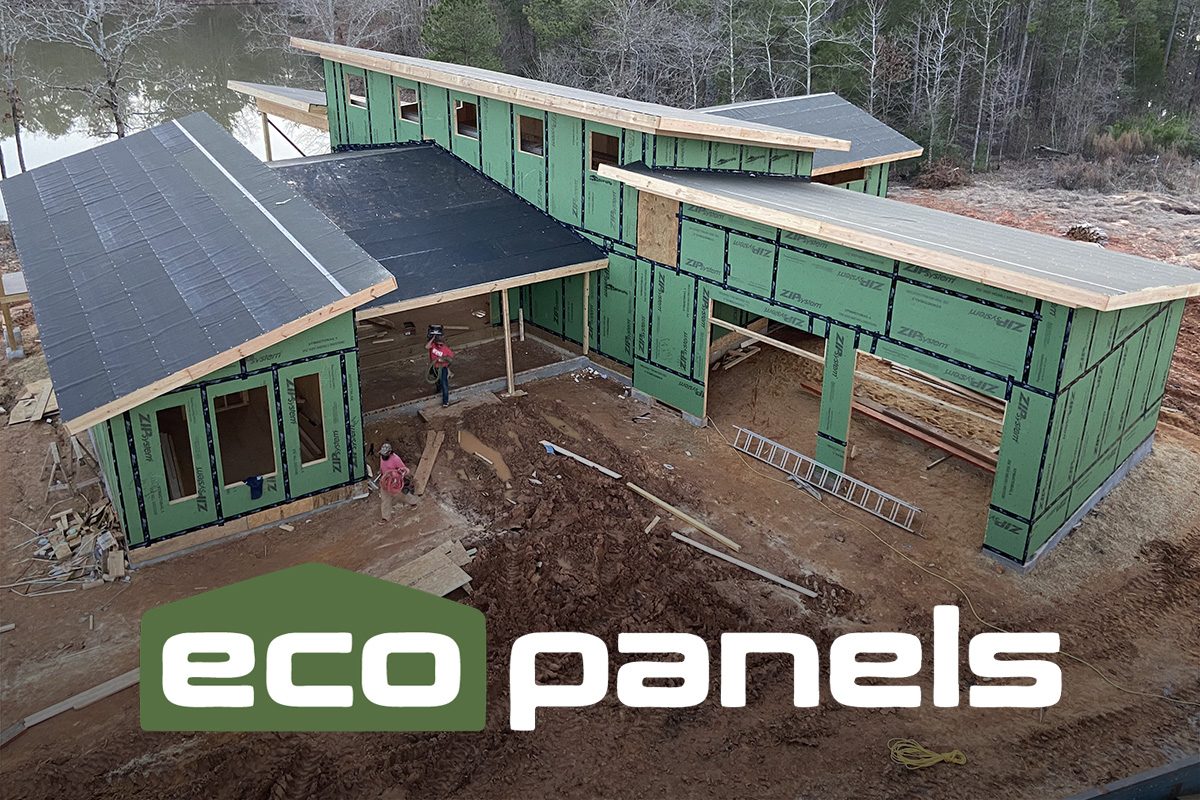
Eco-Panels - Strong and Efficient Building Panels | Homepage
Building a new home? Eco-Panels offers modular building panels that are stronger & safer than stud frame construction for about the same price.

Eco-Panels (www.eco-panels.com)
and I am fairly curious about this product.
-
I'm quite familiar with SIPs. They definitely have their pluses and minuses. They certainly aren't cheap but can be quite effective if installed properly. The key here is that contrary to the suggestion from Eco Panels that low priced labour can erect their product, there better be someone on site who really knows what they are doing. I have seen some bad installs (not Eco Panel's products) and the long term implications are quite serious. While I have been a promoter of SIPs in the past, I think there are easier and cheaper ways to get good R values.
-
Version 2.1.6 - 03.02.2018
- Added Soffit Cut within Advanced Options for Hip Rafter Roofs.
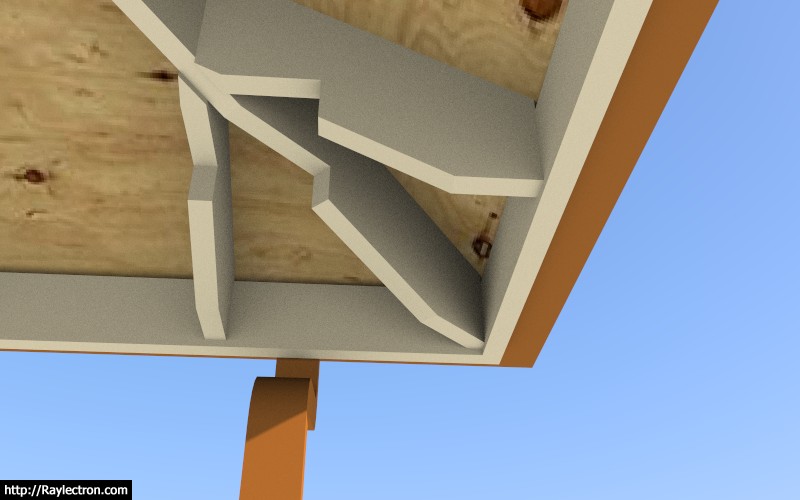
-
Version 2.1.6b - 03.02.2018
- Added Soffit Cut within Advanced Options for all Shed type Rafter Roofs.
- Added gutters for all Shed type Rafter Roofs.
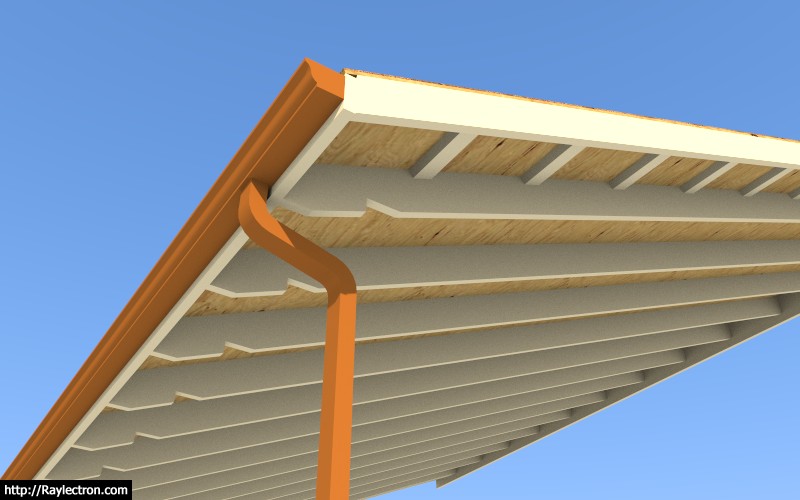
-
The edit feature is slowly coming to fruition. I've added so many advanced options to the common truss type that it is quite an ordeal to even put together the HTML form that fully encompasses all of this information and does it in an organized and neat manner. There is a possibility of 72 unique (user entered) parameters for a common truss assembly. Some of these are dependent on others, its an interesting web of dependencies (spaghetti) that must be taken into account for the edit feature to work properly. I've probably got another week just in debugging before I am ready to release the first version of this feature.
-
Models look high quality. I hope you have ability for multiple Presets so that a type of roof that users use all the time can be saved.
-
A number of presets can be set by the user in the global settings however I have not fully implemented a "store" function that will take an entire roof configuration and store it as a preset roof assembly. This may be another feature that I add.
-
Medeek,
..."take an entire roof configuration and store it as a preset roof assembly."I think this will be very popular, looking forward to this function!

-
Version 2.1.7 - 03.06.2018
- Enabled the "Edit Truss Assembly" function for all common roof trusses (imperial units only).
To edit a roof truss assembly just right click on the assembly and select the "Edit Truss Assembly" option.
Note, that this function is only available for common trusses with imperial units (template). Metric will be next.
It seems to be working fairly robustly but I'm sure there will be some minor bugs that pop up considering the complexity of the code and the sheer numbers of variables that I am working with.
Please report any errors by using the ruby console to record the error and email it to me.
Once this feature has been out for a while and I know it is running fairly stable I will then work on updating all rafter and truss assemblies so that the user can edit them. I can already see that this will be a very useful upgrade to the plugin.
-
Realize that the entire roof assembly is being redrawn from scratch so any manual customization will disappear. It is actually quite a bit faster than I thought it might be so I’m fairly happy with that.
I did notice that when you initially create a truss assembly without any advanced options and then enable advanced options in the edit panel it does not auto populate the various advanced option fields, I think this could use some attention.
Below is a screenshot of the edit panel:
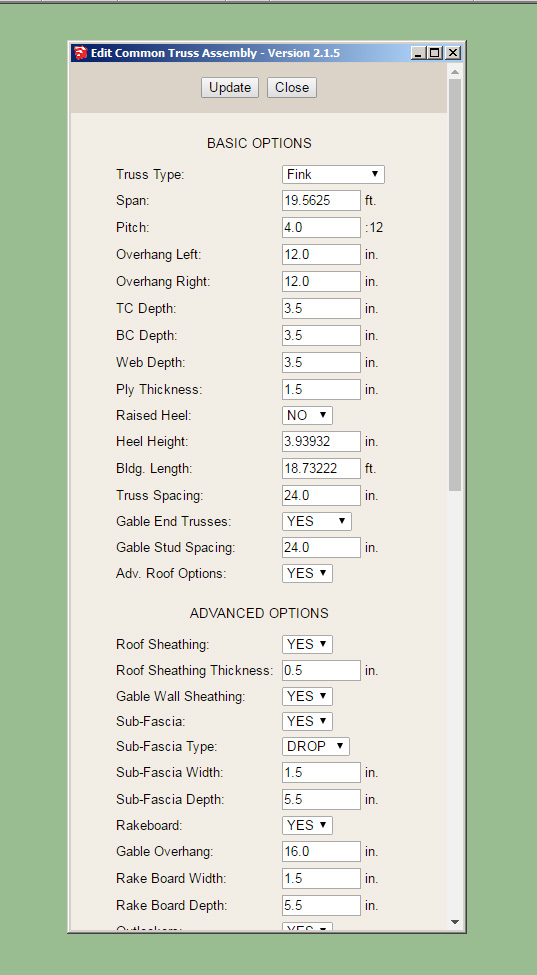
-
Version 2.1.7b - 03.10.2018
- Enabled the "Edit Truss Assembly" function for all common roof trusses (metric units).
-
Tutorial 7, Edit Function and some changes to the global settings:
-
Version 2.1.7c - 03.11.2018
- Added ceiling gypsum and ceiling battens to cathedral trusses.


View model here:
3D Warehouse
3D Warehouse is a website of searchable, pre-made 3D models that works seamlessly with SketchUp.
(3dwarehouse.sketchup.com)
-
-
Should be up now.
-
I've been giving some thought to framed openings in floors, see image below:

Generally, at least from what I've seen most holes in floors are either rectangular, L-shaped or U-shaped, but I guess any outline is possible.
What I've shown in the image above is LSL or LVL framing out the opening however the actual framing might be significantly different depending on what is supporting the floor below.
In some cases the rectangular opening might not be supported by bearing walls from below, in that case the two LSL boards running parallel to the joists would probably be larger beams and the headers would be hangered from these beams and would also probably be more substantial.
The point is how to make this feature flexible enough to accommodate most framed openings but at the same time keeping it as simple as possible so the user is not overwhelmed with parameters.
View model here:
3D Warehouse
3D Warehouse is a website of searchable, pre-made 3D models that works seamlessly with SketchUp.
(3dwarehouse.sketchup.com)
Any ideas would be greatly appreciated.
P.S. I am also going to make this feature editable so that the actual hole can be altered after the fact. This should be an interesting programming challenge.
-
Alternatively that same opening could be framed as below:
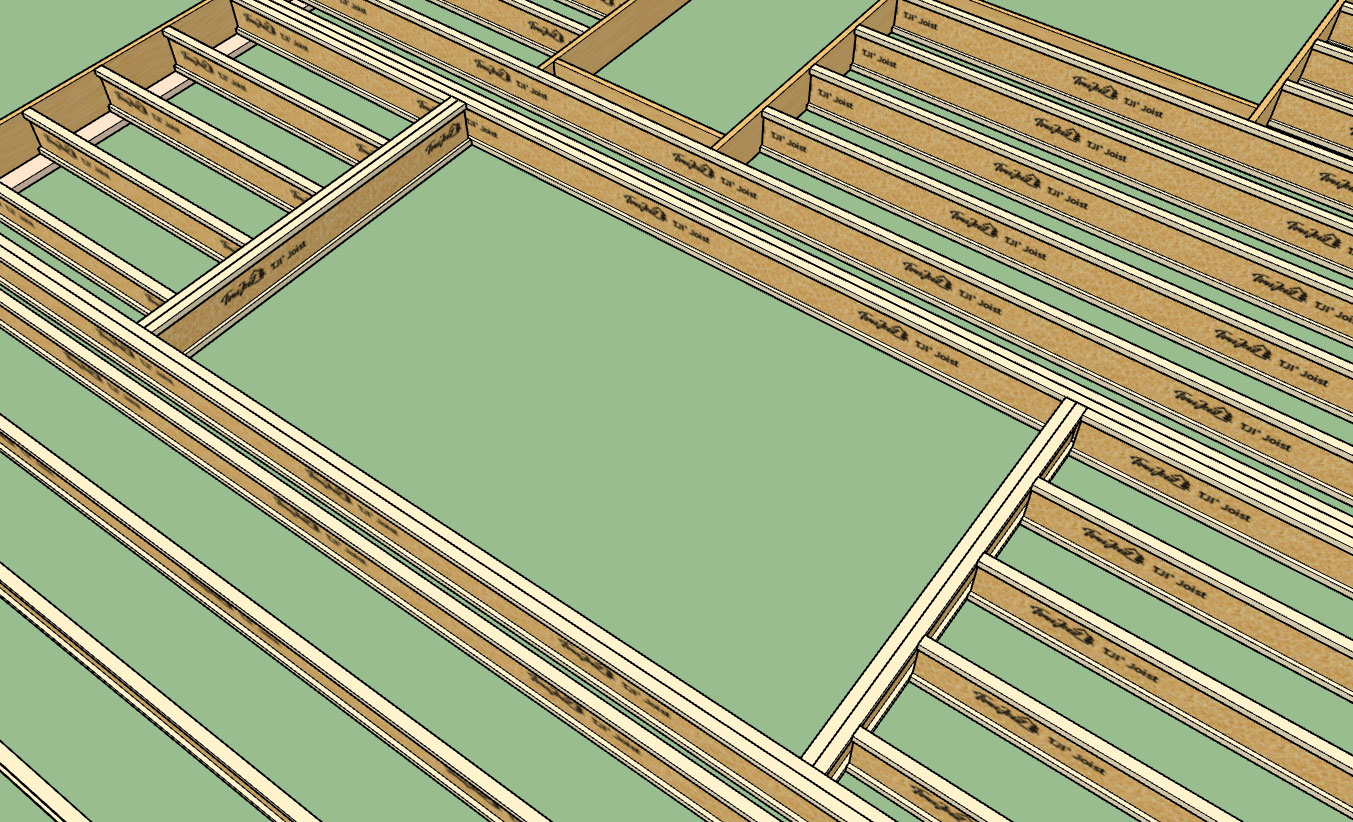
For the size of the opening one would probably use some PSL Beams rather than a couple of I-Joists but the concept is the same, compare with the previous example where the opening would probably be supported from below by bearing walls.
-
Here is an example of a L-shaped opening in a floor to allow for a stairway.

Probably not the best example but I think it helps get the idea across.
Note the bearing walls supporting perimeter of the opening.
Advertisement








